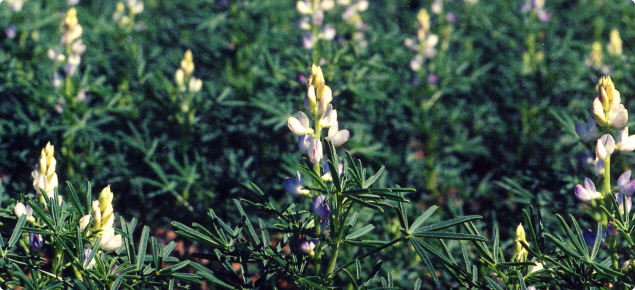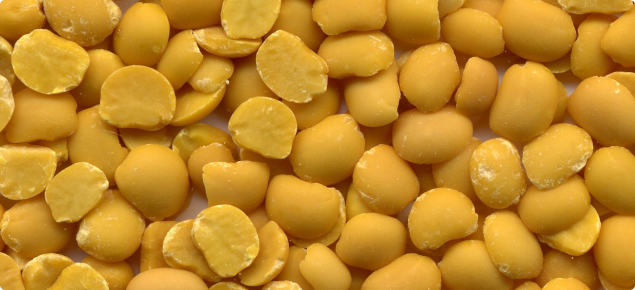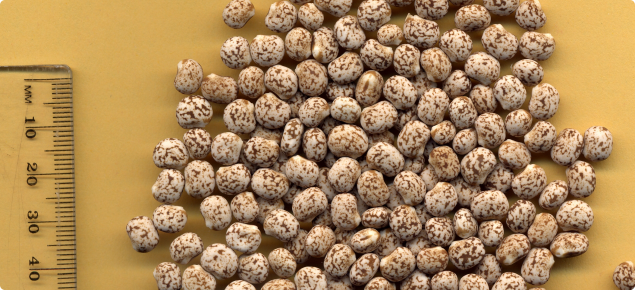Changing farming systems
Lupin species provide an excellent example of how farming in Australia has evolved in response to changes in technology and economics. The modern wheat:lupin rotation became possible through the research of Dr John Gladstones, the University of Western Australia and Department of Agriculture, Western Australia (now the Department of Agriculture and Food, Western Australia, or DAFWA). Dr Gladstones released the first fully domesticated narrow-leafed lupin (Lupinus angustifolius) cultivars adapted to Western Australian conditions in the late 1960s and early 1970s. This was a major technological breakthrough that marked the beginning of grain lupin cropping in Australia.
Lupin is unusual among broadacre crops in that domestication has played a crucial role in its modern development. Other familiar broadacre crops have a much longer history of cultivation, and the varieties we grow today are not very different from those available to farmers one hundred years ago. On the other hand, the lupin species of one hundred years ago were at best semi-domesticated according to modern criteria. This had to be rectified before the usual plant breeding objectives of better adaptation, yield and disease resistance could be pursued.
After the release of the first domesticated varieties, new farming systems utilising lupin emerged slowly through the 1970s. During this time improved methods of managing lupin crops were being developed by Peter Nelson and Dr John Hamblin from DAFWA and other scientists. These methods were based in part on early sowing and the correct use of herbicides for weed control.
Once sound management packages were available, the lupin industry grew rapidly in the 1980s and 1990s, reaching peak production in 1999. The decline in production and the area sown to lupin since then reflects a decrease in the price of lupin grain relative to other commodities, difficulties in controlling weeds that have become resistant to herbicides, and the availability to Western Australian farmers of a greater range of alternative land uses such as canola, new pasture species and field pea.
Lupin is uniquely well suited to the deep, acid sandy soils that occur over large areas of the Western Australian wheatbelt. This unique adaptation, together with further improvements in the techniques for producing lupin and the development of premium paying markets, will ensure that lupin remains a vital component of profitable and sustainable farming systems in Western Australia.



